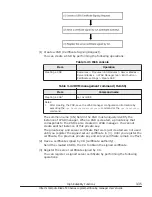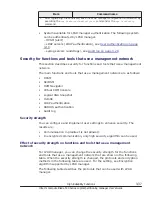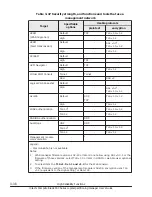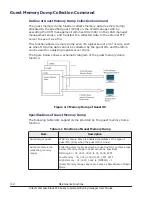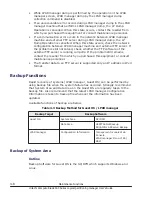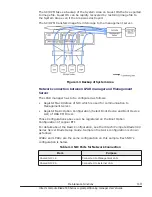
Item
Description
Initials: Up to 30 characters
4
Unstructured name: Up to 60
characters
4, 6
Challenge password: Up to 30
characters
4, 6
Notes:
1
.
Required item
2
.
Alphanumerical characters, hyphens (-), and periods (.) can be used for this
item.
3
.
Uppercase alphabetic characters can be used.
4
.
Alphanumerical characters, hyphens (-), periods (.), pluses (+), single
quotations ('), commas (,), left parentheses ((), right parentheses ()), slashes
(/), colons (:), equals (=), question marks (?), and spaces can be used for this
item.
5
.
Printable ASCII characters can be used.
6
.
This can be filled in when CSR is created.
7
.
You can check the signature algorithm by using the
get HvmServerCertificate
command of the HvmSh command.
•
Creating LPAR manager server certificate
To create self signed certificate:
A self-signed certificate is automatically created when LPAR manager
starts for the first time. You can re-create it by performing the following
operations:
Table 3-40 HVM management command (HvmSh)
Item
Command name
Creating a self-signed
certificate
1
opr HvmServerCertificate
Obtaining a self-signed
certificate
get HvmServerCertificate
Notes:
1
.
After creating a self-signed certificate, save the LPAR manager configuration
information by executing the
opr HvmSecureCmmConfigSave
command or the
opr SaveConfig
command.
The common name (CN) field in the CSR must uniquely identify the
instance of LPAR manager.
To create certificate signed by CA:
The following flow-chart shows the process of registering through using a
certificate signed by CA.
3-34
High Reliability Functions
Hitachi Compute Blade 500 Series Logical partitioning manager User's Guide
















